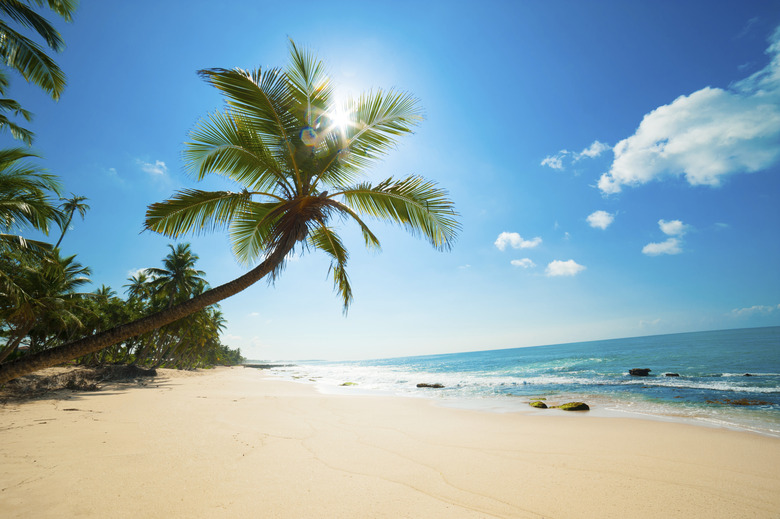PH Levels Of Sand
Sand results when rocks and minerals are broken down by erosion and weathering over time into small particles of various sizes, similar to grains of salt. Pure sand is rarely encountered in natural settings. Instead, it is usually mixed with other substances that affect the blended, sandy soil they create. When considering sand in your garden, the pH level depends on what materials are mixed in.
What is pH
The potential for hydrogen in substances is measured by the pH scale, which runs from 0 to 14. Seven on the scale is neutral. A pH that is 0 to 7 is considered more acidic, with 0 being a high level of acidity. A pH in the range of 7 to 14 is basic, or alkaline, with 14 being at the highest basic level. Levels of pH are important in gardening because they affect plant nutrients in the soil.
Sand pH
Pure sand is mostly made from silica, a substance with a neutral pH of 7. But pure silica is rarely found outside laboratory settings. Sand in your garden or for sale in garden centers will have other materials mixed in. These can include living organisms, vegetative matter, even water and salts. All these things affect the pH of what is recognized as sand.
Measuring pH
The pH level in some substances can be measured by using a pH meter. This is a penlike digital device, attached to a voltage meter, often sold in garden centers. You can also use pH testing kits that mix chemicals with water and your sand, and then change color to reflect pH levels. The best way to check the pH of sandy soils in your garden is by having your soil tested by a soil laboratory. This provides the most accurate pH results along with recommendations on changes to be made.
Raising pH
To raise the pH of sand or sandy soil, you need to add substances that are high pH, or alkaline, themselves. Adding lime to sand or soil that is on the acidic side will increase the pH and result in a basic or alkaline soil or sand mixture. This is best done only on recommendations from your soil test. Too much alkalinity can harm certain plants.
Lowering pH
To lower soil pH, you must add products that are acidic. Ammonium sulfate or urea coated with sulfur are common fertilizer ingredients used to lower the pH of soil or sand mixtures. These should only be used according to soil test recommendations. Overly acidic soils can be toxic to plants.
